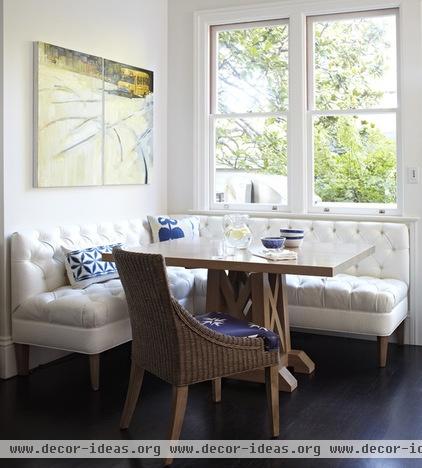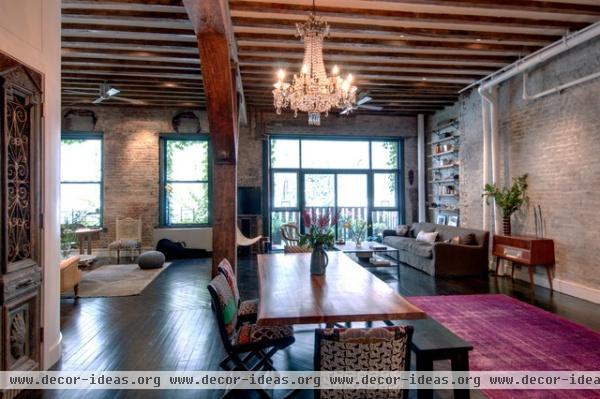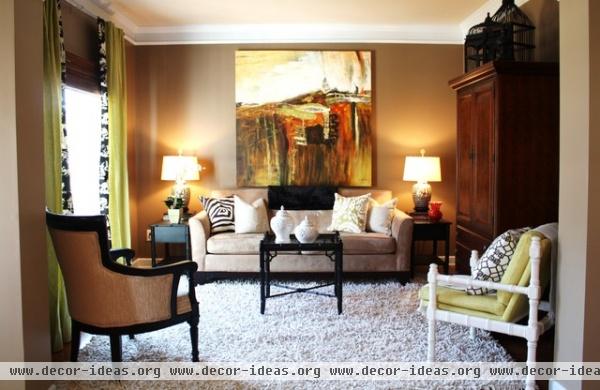3 Reasons You Might Want a Designer's Help
Let’s get one thing out of the way right now: You don’t have to be rich to work with a designer. In fact, working with the right professional can actually save you money, stress and time, and can prevent more than a few DIY disasters. I’m not saying that we can all afford the fabulous Martyn Bullard (because we can’t), but there are many great designers who are happy to work with people on an affordable, per-project basis — selecting paint colors, finding the right window coverings and so on.
Interior design today is all about creative collaboration. Gone are the days of designers sweeping in and enforcing their aesthetic on everyone at any cost — unless you want that, of course. The most gorgeous homes often are a direct reflection of a great client-designer relationship — one that you can have, too.

Why and How to Collaborate With a Designer
1. You have the vision but just can't seem to pull it together. Sometimes you know what you want, but you don't know how to get it. For many homeowners, picking out a nice sofa isn't the issue; it's trying to pair that sofa with a rug. Maybe you have all the foundation pieces in place, but your living room lacks warmth or personality. Maybe you want a built-in breakfast nook but have no idea whom you should call or how to get there.
I've had multiple clients tell me how embarrassed they are that despite spending hundreds of dollars and trying over and over again, they can't get their rooms to look the way they want. The truth is, not everyone is a design expert; just like I would never attempt to perform surgery, not everyone should build a bookcase.
Design truth: There's no right or wrong way to design a home in which functional and lifestyle needs are met. There are merely different interpretations of objects and space and how they relate to each other.

2. You are at your breaking point and need help with a fresh start. A few years ago I had a late-night powwow with a client and her husband. Things had been tense, so I asked the husband to voice his concerns. He said, “I really don’t mind that we’re working with a designer, but what I do mind is spending tons of money on more stuff that we’re probably going to end up replacing next year.”
This was a moment of ephiphany. His wife, in her well-meaning attempts to create the home of her dreams, had spent a good deal of money on stuff that didn’t fit the space, eventually boxing it back up and buying more stuff. All her husband saw was money flowing out, instead of comfort coming in.
Often, by the time people have called in a designer, they’ve given it their best shot (several times over), and someone in the house is at the breaking point. Sadly, not everything that’s been purchased should stay. You may need to clear the decks a little to build a better foundation for the room. If you aren’t willing to part with certain pieces, make sure to let your designer know up front.
Design truth: It should never be a designer’s way or the highway. Design is a collaborative process in which a designer honestly tells you what works and what doesn’t to create the space of your dreams.

3. You're ready to get what you want. Above all else, interior design is a service-oriented profession — the client’s satisfaction is the most important goal. These tips can help you have a positive and productive experience with a designer:Have a general idea of what you want to spend, including designer charges. Keep in mind that it doesn't all need to happen at once (you can decorate in stages), but be realistic about the things you are willing to spend a lot on (a sofa, a new bed) and what things are less permanent (throw pillows). A designer can help you understand if you’re on target or need to expand your vision.Figure out what you're willing to part with and what absolutely needs to stay. Consider which items will actually work in a refreshed space and do your best to be open to suggestions.If you have a partner, make sure you're both on the same page when it comes to what you’re looking for. A designer can help facilitate compromise and illustrate points, but probably won't be able to solve deep domestic disputes.Respect each other. A designer’s “product” is the skill and expertise he or she brings to every project. The way a room is staged and the placement of objects is a tangible manifestation of a designer’s value. Ask your designer about his or her decisions. You bring valuable viewpoints to a project that will make it all come together. A climate of mutual respect can go miles toward a positive relationship.

Remember, a designer’s primary goal is to transform your space into a realization of your likes, wants and needs. However, most designers are only as good as you allow them to be. Honesty, open communication, trust and a willingness to stretch your imagination are the keys to making the most of a client-designer relationship.
More: Use the Houzz directory to find a designer near you












